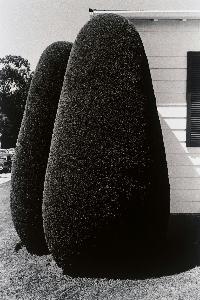Henry Wessel Jr.
Henry Wessel Jr.;Henry Wessel
Place: Teaneck
Born: 1942
Death: 2018
Biography:
Henry Wessel Jr. was a renowned American photographer and educator, celebrated for his obdurately spare and often wry black-and-white pictures of vernacular scenes in the American West. Born on July 28, 1942, in Teaneck, New Jersey, Wessel developed an interest in photography during his time at Pennsylvania State University, where he graduated in 1966.
Early Career and Influences
Wessel's early career was marked by a chance encounter with a book of photographs that sparked his passion for the medium. He began using a Leica 35 mm camera with a 28 mm wide-angle lens and Kodak Tri-X film, which became his signature equipment for much of his career. His work was influenced by the new topographics movement, which sought to capture the everyday aspects of American life.
Notable Works and Exhibitions
Wessel's first solo exhibition was curated by John Szarkowski at the Museum of Modern Art in New York in 1972. He was also one of ten photographers included in the influential New Topographics: Photographs of a Man-Altered Landscape exhibition at George Eastman House in 1975. His work has been exhibited in solo exhibitions at Tate Modern in London, the Museum of Modern Art in New York, and the San Francisco Museum of Modern Art. Some of his notable publications include:
- House Pictures (1992)
- Night Walk (2000)
- Henry Wessel: Rena Bransten Gallery Exhibition Catalogue (2000)
- California and the West / Odd Photos / Las Vegas / Real Estate Photographs / Night Walk (2006)
Awards and Legacy
Wessel was the recipient of two Guggenheim Fellowships and three National Endowment for the Arts grants. His work is included in the permanent collections of major American, European, and Asian museums, including the San Francisco Museum of Modern Art and the Museum of Modern Art in New York. Wessel passed away on September 20, 2018, at the age of 76, leaving behind a legacy of vernacular photography that continues to inspire artists and photographers today. His work can be explored further through the Wikioo.org collection, which features an extensive range of his photographs. For more information on Henry Wessel Jr.'s life and work, visit the Wikipedia page dedicated to his biography.

